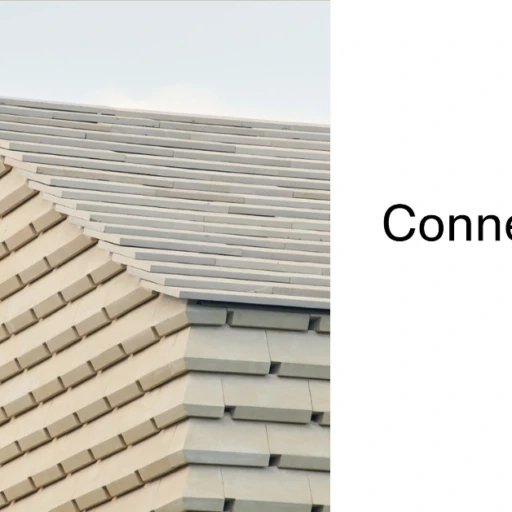A former industrial sewage treatment area on Amsterdam’s Zeeburgeiland island will become in 2026 the new model neighborhood where “people, plants and animals feel at home,” in the words of its designers, the VenhoevenCS studio and the firm DS Landschapsarchitecten. Indeed, from the following images it looks like science fiction: this is what a city would feel if nature were to burst into it.
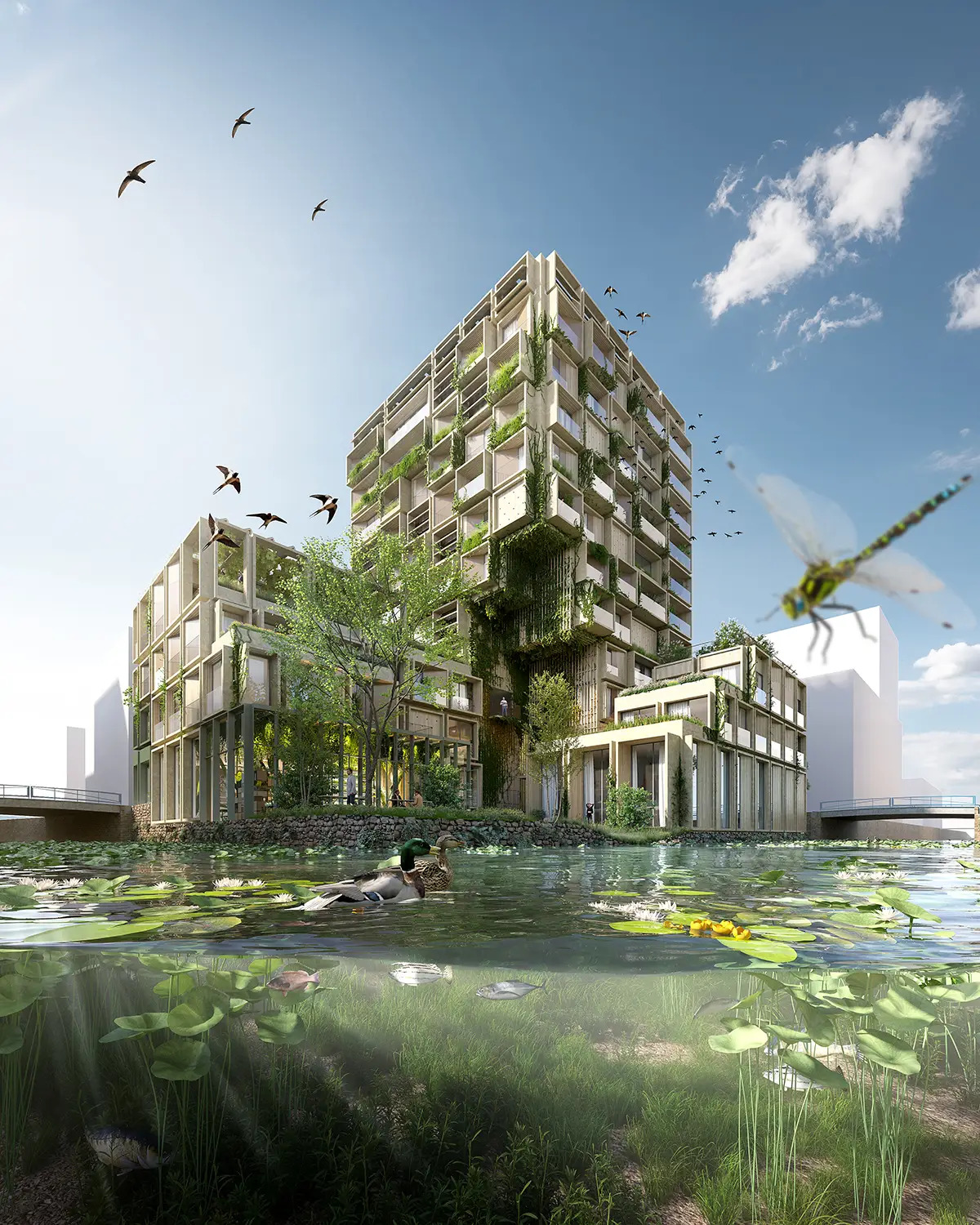
Proto Zoöp Zeeburg: 82 apartments for people, plants and animals
This neighborhood, with a gross floor area of 10,000m², will have 82 new apartments of a minimum of 40 m², designed for a variety of families and leaving space in the lower part for commercial areas and entrepreneurs. Construction is scheduled to start in 2024 and be completed in 2026.
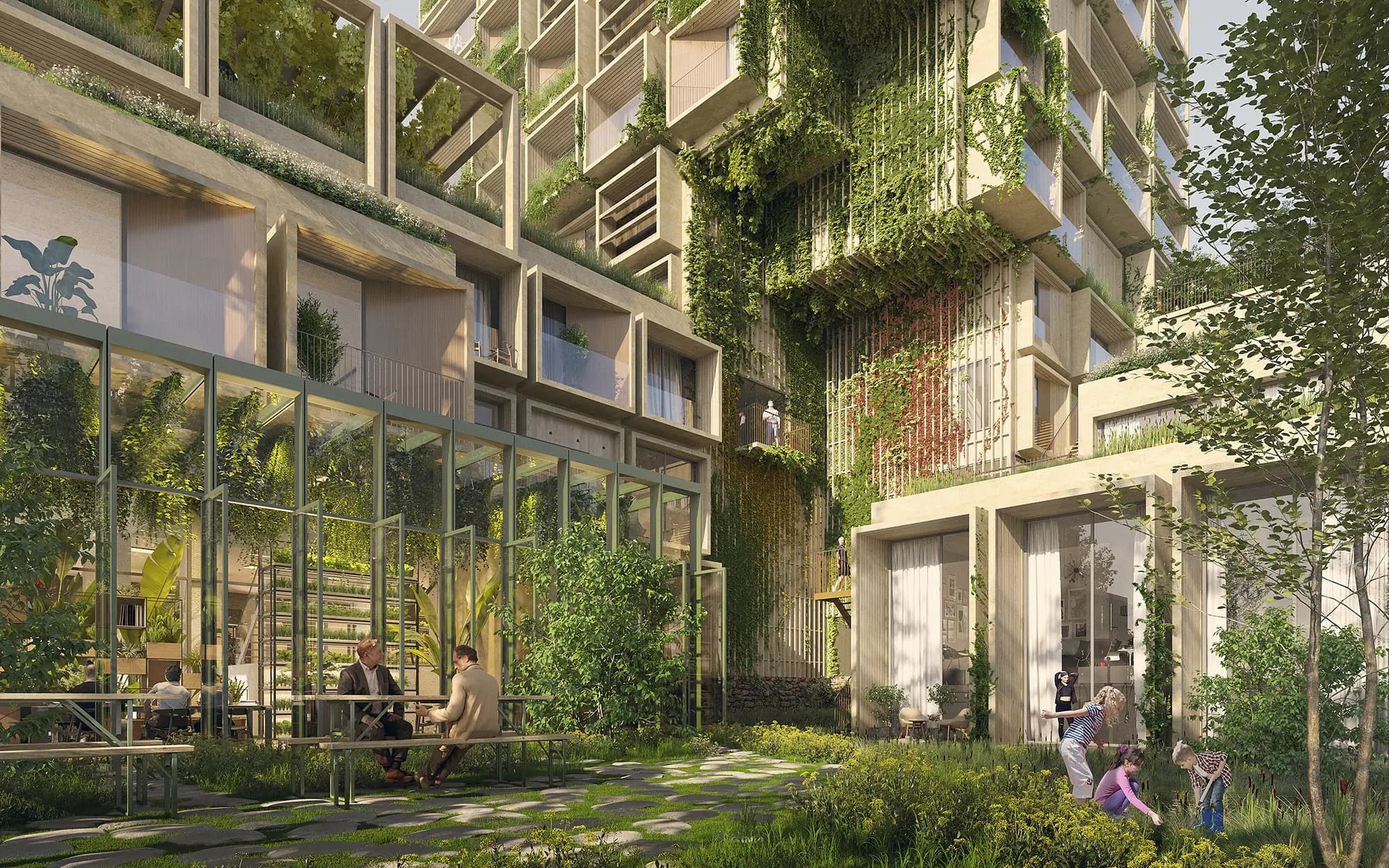
The hallmark of this housing solution is that it will provide a comfortable habitat for wild animals that were fleeing the city, such as birds, bats or fish. It will achieve this through green roofs, gardens and water, as well as nests installed on the facade of the building.
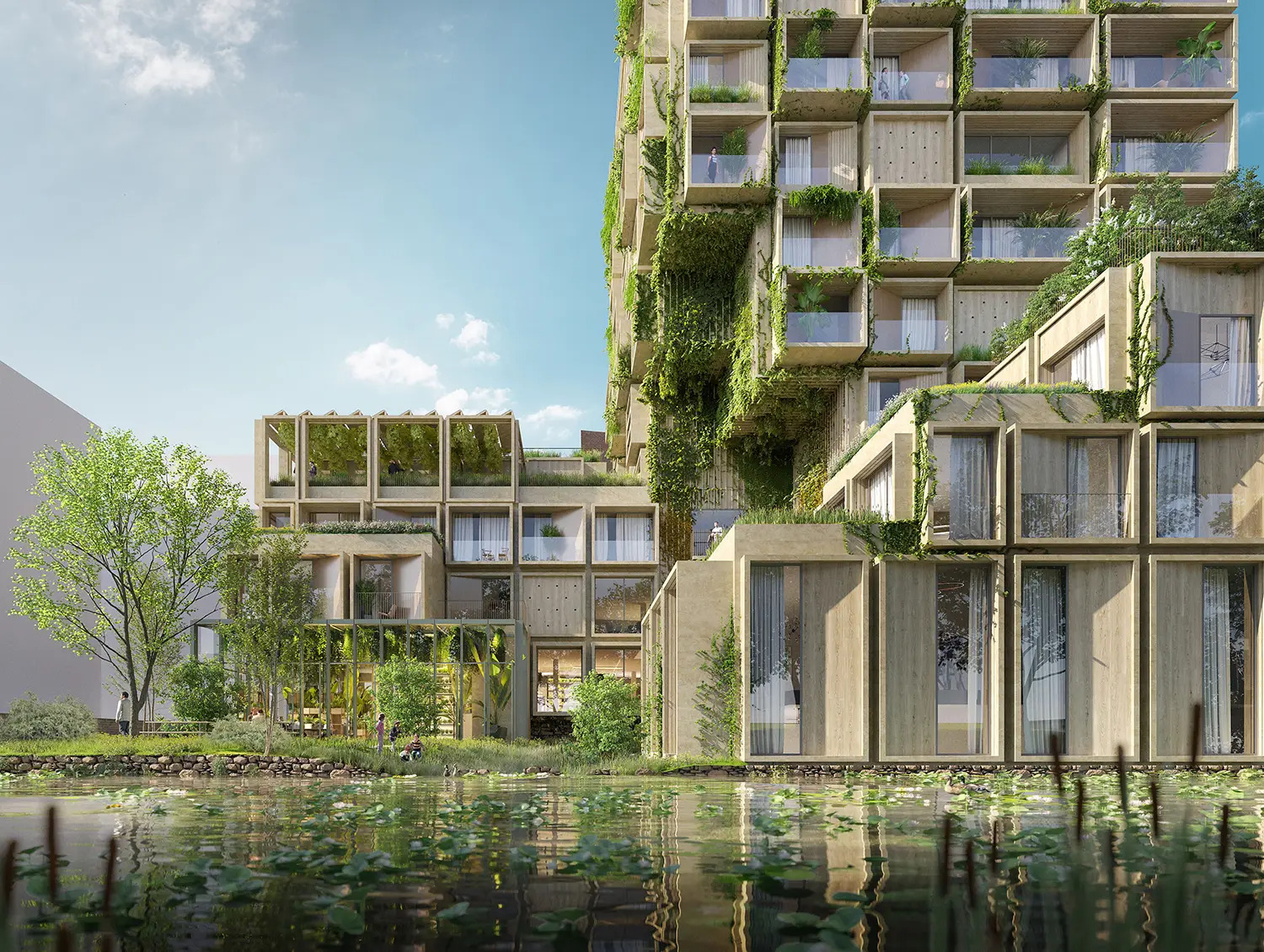
Zoöp: ensuring the coexistence of biodiversity and sustainability
The originality of this project lies in Zoöp. This is a term derived from Greek, which designates life, and consists of an organization based on mutually beneficial cooperation between the human and the non-human. “An option for an inclusive life in nature, as advocated by architect Jos-Willem van Oorschot.
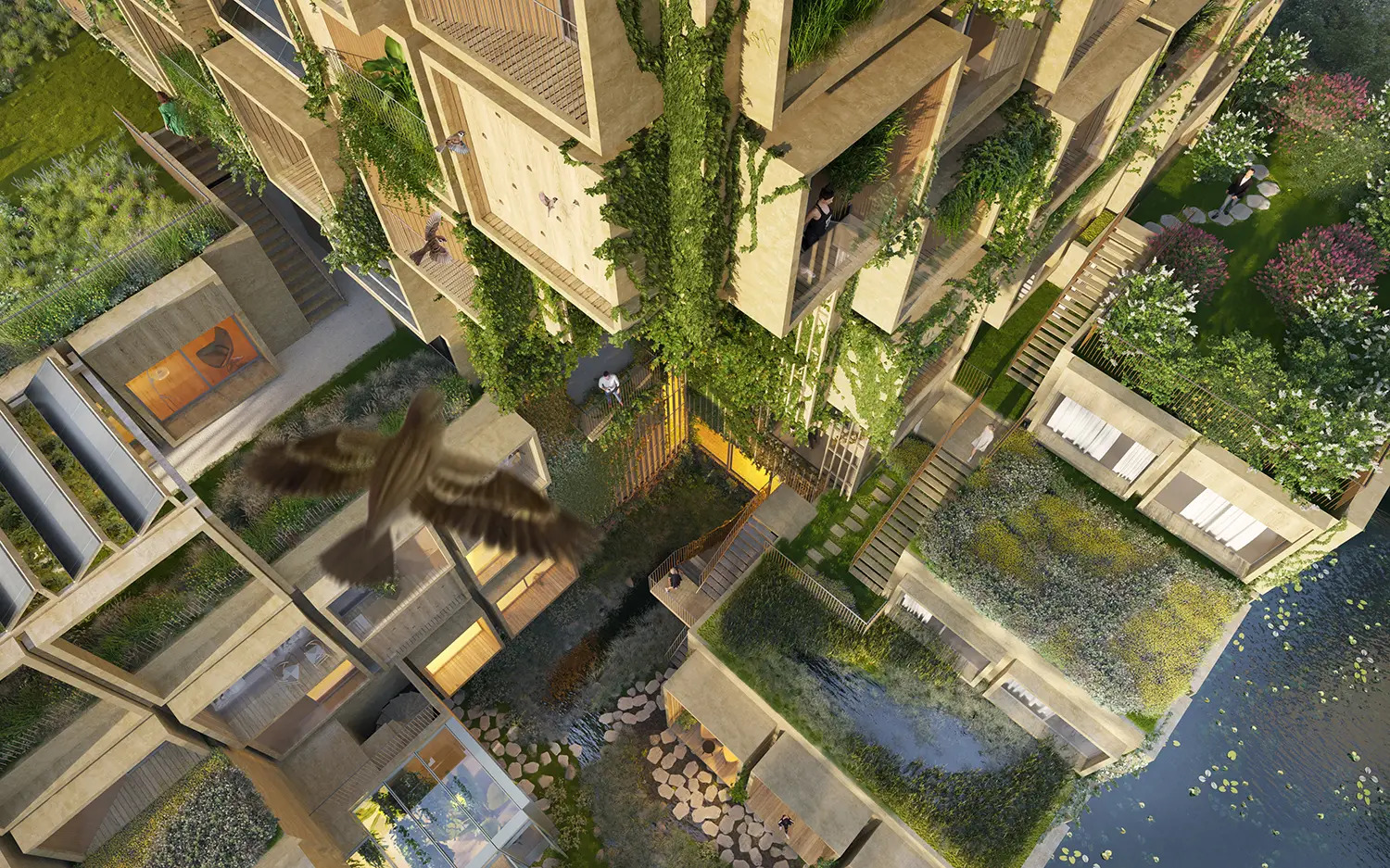
Such is the focus on this coexistence with the environment that the lower part of the building will house a space for environmental organizations to monitor the evolution of the ecosystem for years, to see if anything can be improved in the design. In addition, the Zoöp itself, under which the main building is constructed, includes a person to act as a representative of the non-human beings, with the aim of guiding the conceptualization of the space towards their well-being.
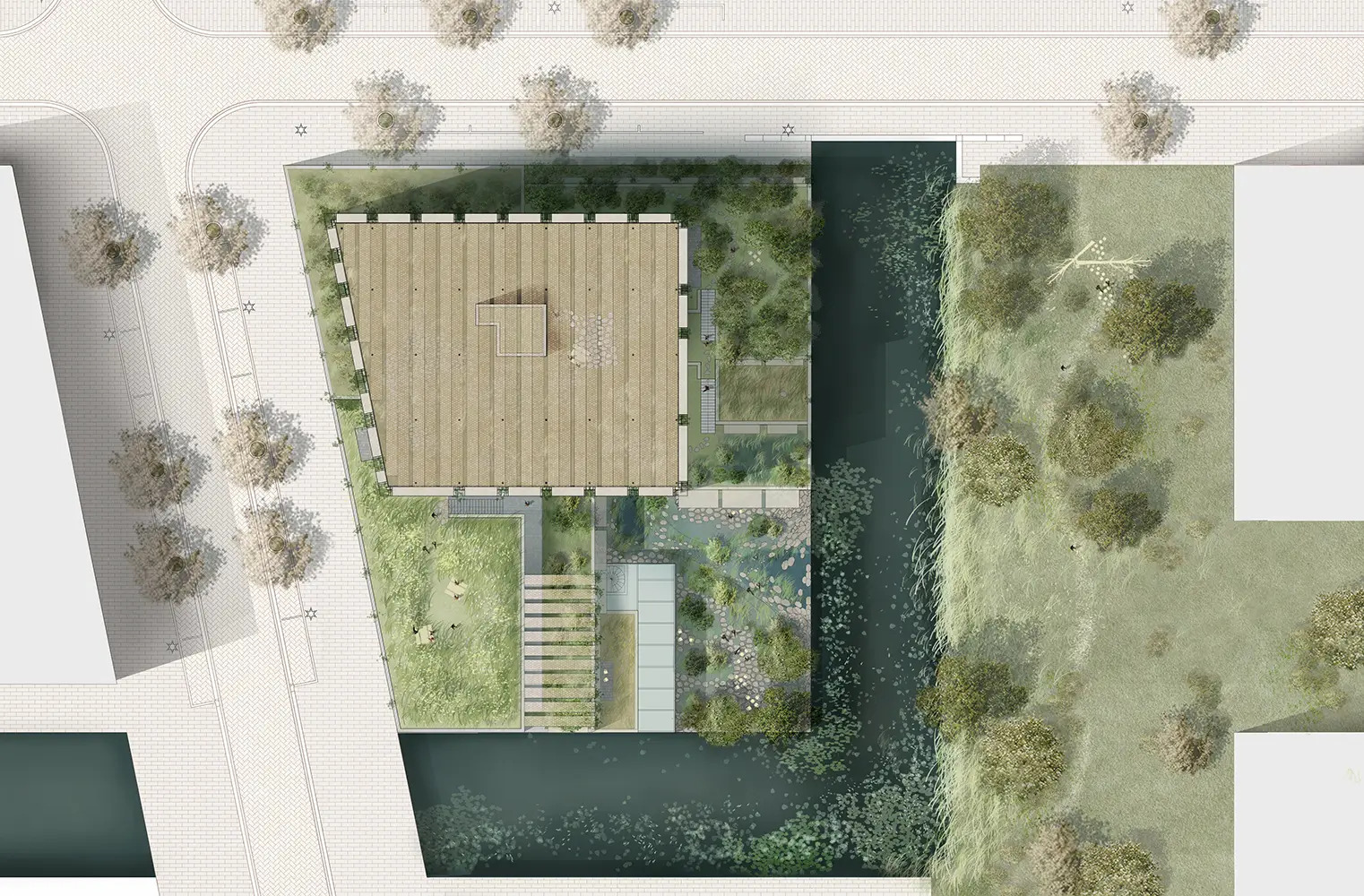
A community of this style could not be conceived without strong sustainability criteria: from the triple glazing of the windows or heat recovery system to the use of photovoltaic panels. And all this in a space that will be car-free.
Would you move into a Zoöp? Do you think cities should promote this type of communities in coexistence with nature? Tell us your impressions on social networks using the hashtag #ConnectionsByFinsa so we keep inspiring and connecting you with trends!



